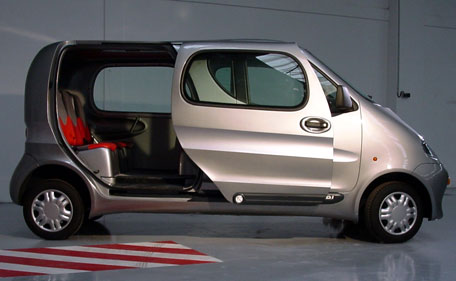If you are a fan of electric and particularly hybrid vehicles, and more people apparently are every day, you have to like the spectacular news coming out of Ferrari and the recent report from Autodata Corp., a research firm.
Let’s start with Ferrari, which unveiled its La Ferrari supercar in Geneva in March. Yes, Ferrari’s “biggest and baddest” car these days is a hybrid, according to the Los Angeles Times (http://www.latimes.com/business/autos/la-fi-hy-autos-hybrid-20130330,0,2070748.story). It’s a V-12, “949-horsepower, million-dollar monster” that also has two electric motors and recharges its batteries with regenerative braking and the engine’s excess torque.
Who knows how many La Ferraris will actually sell, but the good news from Autodata is that hybrids are certainly selling faster than ever. Hybrid sales in the first two months of 2013 are up 32 percent over the same period last year, according to the Times report.
While overall marketshare is still low, about 4 percent, the fact that Ferrari is now in the hybrid market underscores the fact that that hybrid technology “is being taken seriously by virtually all the automakers,” noted analysts in the Times, including Nissan which introduced a new hybrid version of the Pathfinder at the New York Auto Show in February after dropping out of the hybrid market a few years ago. Overall, hybrids deliver 40 percent better fuel economy than conventional gasoline-powered cousins of the same model.
As we have noted earlier, the Prius is now the best-selling car in California, the nation’s largest auto market, and they’re apparently reliable. Not only are they now being used as taxicabs, which take a notorious beating, but the Times story notes that Toyota reports that 90 percent of all Prius cars it sold since introducing the model are still on the road.
The story includes a note that one large Houston Ford dealership reports that its sales of hybrids are up 400 percent from a year ago. Nationally, Ford reports it’s selling 3,000-4,000 of its C-Max hatchback hybrid, a direct competitor to the Prius V station wagon, according to the Times.
While Toyota’s hold on the hybrid market has dropped from 73 percent to 63 percent, thanks to competitors like Ford, the overall market size is much bigger, meaning “both automakers are sharing a bigger pie,” noted the Times.
Unfortunately, hybrid vehicles are difficult to link directly to small cap stocks. So we’ve taken some liberties and included companies like Tesla Motors, which makes electric vehicles and is a mid-cap, and Axion Power International, which makes a battery used in a hybrid 18-wheeler made by a private company called ePower.
Palo Alto, CA-based Tesla Motors (Nasdaq: TSLA, http://www.teslamotors.com/) manufactures the Tesla Roadster, the Model S and other electric vehicles and electric powertrain components. The last time we looked at Tesla last on Feb. 20 it closed at $38.90 with a market cap of $4.4 billion. But it came out with promising news this week, saying car sales nearly doubled in the first quarter of 2013 compared to the fourth quarter, and expects to turn a profit. TSLA closed April 2 at $44.34, up 41 cents, with a market cap of $5.1 billion. Its 52-week range is now $25.52-$46.68.
New Castle, PA-based Axion Power International (OTC: AXPW, http://www.axionpower.com/) has developed a specialty PbC battery technology designed for micro- and mild-hybrids, as well as an advanced energy storage device. A private Pennsylvania-based company, ePower, is developing 18-wheeler hybrid trucks with the Axion PbC batteries. Axion closed April 2 at 26 cents, down 1 cent for othe day, with a market cap of $30 million. Its 52-week trading range is $0.20-$0.47.
Santa Rosa, CA-based ZAP (OTC: ZAAP.OB, http://www.zapworld.com/) makes a variety of all-electric vehicles including trucks, motorcycles, shuttle buses and sedans and was formerly known as ZAPWORLD.COM. Most of its business at this point is with government or military customers. When we last checked on Feb. 20 its stock closed at $0.08 with a market cap of $24 million. It closed April 2 at $0.17, up 2 cents on the day with a market cap of $51 million. Its 52-week trading range is $0.06-$0.27.
San Diego-based Maxwell Technologies Inc. (Nasdaq: MXWL, http://www.maxwell.com/) was formerly known as Maxwell Laboratories. The company manufactures ultracapacitors that are energy storage devices and power delivery systems for use in transportation, automotive, IT and industrial electronics. MXWL closed Feb. 20 at $10.01 with a market cap of $292 million. It closed April 2 at $4.98, down 17 cents for the day, with a market cap of $145 million. Its 52-week trading range is $4.92-$18.33.

